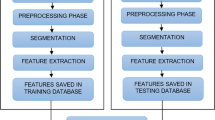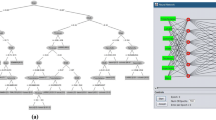Abstract
Fruit essential oils perceive a lot of demands in various industrial meadows such as medicines, cosmetics, and foodstuff. Adulteration of essential oils results in replacing its high price ingredients with low-priced and quality ingredient replacements. These products can be eye-catching and profitable but observe complications and side effects on consumers. Hence, it is essential to apply an efficient novel practice to authenticate the quality of fruit essential oils and their percentage of adulteration. The nonvolatile portion of fruit essential oils is usually undervalued due to their trivial influence on the smell profile. The purpose of our research is to outline various machine learning practices that let authenticate fruit essential oils by chromatographic procedures. Naïve Bayes (NB), Neural Networks (NN), Multi-layer Perception (MLP), Support Vector Machine (SVM), Decision Tree (DT), Random Forest (RF), and Logistic Regression (LR) techniques are compared, and their performance metrics are studied to propose best suitable practice for essential oil classification.
Access this chapter
Tax calculation will be finalised at checkout
Purchases are for personal use only
Similar content being viewed by others
References
Patsilinakos A, Artini M, Papa R, Sabatino M, Božović M, Garzoli S, Vrenna G, Buzzi R, Manfredini S, Selan L, Ragno R (2019) Machine learning analyses on data including essential oil chemical composition and in vitro experimental antibiofilm activities against staphylococcus species. Molecules 24(5):890. https://doi.org/10.3390/molecules24050890
Siavash R, Eslam P, Mohammad RG, Parviz N (2009) Investigation of different linear and nonlinear chemometric methods for modeling of retention index of essential oil components: concerns to support vector machine. J Hazard Mater 166(2–3):853–859. ISSN 0304-3894. https://doi.org/10.1016/j.jhazmat.2008.11.097
Papa R, Garzoli S, Vrenna G, Sabatino M, Sapienza F, Relucenti M, Donfrancesco O, Fiscarelli EV, Artini M, Selan L, Ragno R (2020) Essential oils biofilm modulation activity, chemical and machine learning analysis—application on staphylococcus aureus isolates from cystic fibrosis patients. Int J Mol Sci 21(23):9258. https://doi.org/10.3390/ijms21239258
Ibrahim AF, Al-Dhaif R, Elkatatny S, Al Shehri D (2021) Machine learning applications to predict surface oil rates for high gas oil ratio reservoirs. ASME J Energy Resour Technol 144(1):013003. https://doi.org/10.1115/1.4052485
Ragno R, Papa R, Patsilinakos A (2020) Essential oils against bacterial isolates from cystic fibrosis patients by means of antimicrobial and unsupervised machine learning approaches. Sci Rep 10(2653):3161. https://doi.org/10.1038/s41598-020-59553-8
Sabatino M, Fabiani M, Božović M, Garzoli S, Antonini L, Marcocci ME, Palamara AT, De Chiara G, Ragno R (2020) Experimental data based machine learning classification models with predictive ability to select in vitro active antiviral and non-toxic essential oils. Molecules 25(10):2452. https://doi.org/10.3390/molecules25102452
Taghadomi-Saberi S, Mas Garcia S, Allah Masoumi A, Sadeghi M, Marco S (2018) Classification of bitter orange essential oils according to fruit ripening stage by untargeted chemical profiling and machine learning. Sensors 18(6):1922. https://doi.org/10.3390/s18061922
Mancianti F, Ebani VV (2020) Biological activity of essential oils. Molecules 25(3):678. https://doi.org/10.3390/molecules25030678
Mourad K, Ilias M, Meryem EJ, Abdelaziz B, Yvan VH (2020) Recent advances in untargeted and targeted approaches applied in herbal-extracts and essential-oils fingerprinting—a review. J Pharm Biomed Anal 177:112849. ISSN 0731-7085. https://doi.org/10.1016/j.jpba.2019.11284
Leo L, Alireza G, Brett P (2021) Data handling and data analysis in metabolomic studies of essential oils using GC-MS. J Chromatogr A 1640:461896. ISSN 0021-9673. https://doi.org/10.1016/j.chroma.2021.461896
Riela S et al (2008) Effects of solvent‐free microwave extraction on the chemical composition of essential oil of Calamintha nepeta (L.) Savi compared with the conventional production method. J Sep Sci 31.6‐7 (2008):1110–1117
El Asbahani A et al (2015) Essential oils: from extraction to encapsulation. Int J Pharm 483.1–2 (2015):220–243
Mohammadhosseini M (2016) Screening of the profiles of the essential oils from the aerial parts of Nepeta racemosa using classical and microwave-based methods: comparison with the volatiles using headspace solid-phase micro-extraction. J Herbal Drugs (An Int J Med Herbs) 7.2:97–108
Liang Z, Zhang P, Fang Z (2022) Modern technologies for extraction of aroma compounds from fruit peels: a review. Crit Rev Food Sci Nutr 62.5:1284–1307
Mwaurah PW et al (2020) Novel oil extraction technologies: Process conditions, quality parameters, and optimization. Compr Rev Food Sci Food Saf 19.1:3–20
Hanif MA et al (2019) Essential oils. Essential oil research. Springer, Cham, pp 3–17
Tohidi B, Rahimmalek M, Trindade H (2019) Review on essential oil, extracts composition, molecular and phytochemical properties of Thymus species in Iran. Ind Crops Prod 134(2019):89–99
Bellou E et al (2020) Laser-induced breakdown spectroscopy assisted by machine learning for olive oils classification: the effect of the experimental parameters. Spectrochim Acta Part B Atomic Spectroscopy 163:105746
Artini M et al (2018) Antimicrobial and antibiofilm activity and machine learning classification analysis of essential oils from different mediterranean plants against pseudomonas aeruginosa. Molecules 23.2:482
Lebanov L et al (2020) Random Forests machine learning applied to gas chromatography–Mass spectrometry derived average mass spectrum data sets for classification and characterisation of essential oils. Talanta 208:120471
Sabatino M et al (2020) Experimental data based machine learning classification models with predictive ability to select in vitro active antiviral and non-toxic essential oils. Molecules 25.10:2452
Patsilinakos A et al (2019) Machine learning analyses on data including essential oil chemical composition and in vitro experimental antibiofilm activities against Staphylococcus species. Molecules 24.5:890
Author information
Authors and Affiliations
Corresponding author
Editor information
Editors and Affiliations
Rights and permissions
Copyright information
© 2023 The Author(s), under exclusive license to Springer Nature Singapore Pte Ltd.
About this paper
Cite this paper
Rao, K.S., Potluri, S., Venkateswarlu, S., Bandari, M. (2023). Classification of Fruit Essential Oils Using Machine Learning Practices. In: Kumar, A., Ghinea, G., Merugu, S. (eds) Proceedings of the 2nd International Conference on Cognitive and Intelligent Computing. ICCIC 2022. Cognitive Science and Technology. Springer, Singapore. https://doi.org/10.1007/978-981-99-2742-5_17
Download citation
DOI: https://doi.org/10.1007/978-981-99-2742-5_17
Published:
Publisher Name: Springer, Singapore
Print ISBN: 978-981-99-2741-8
Online ISBN: 978-981-99-2742-5
eBook Packages: Computer ScienceComputer Science (R0)




